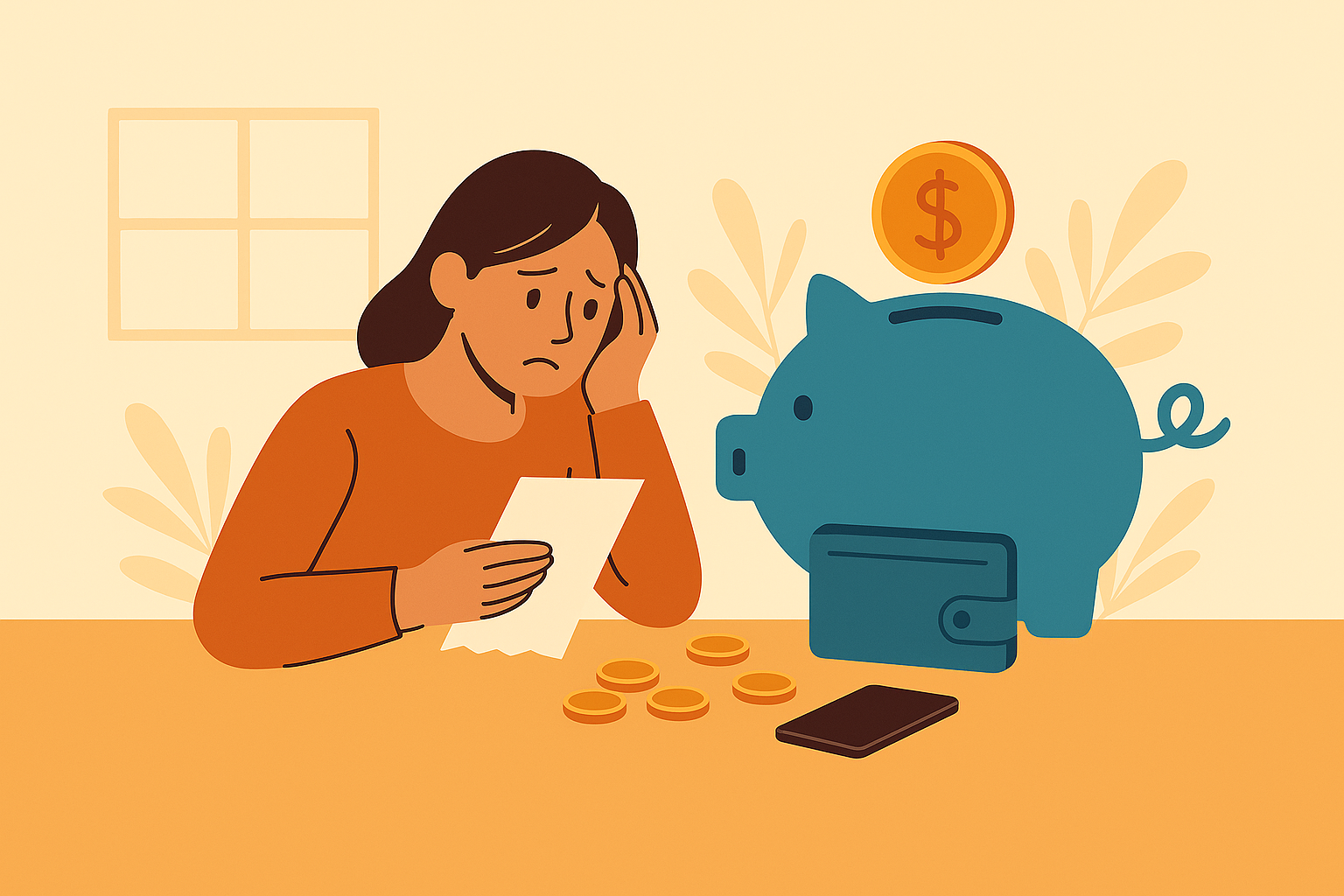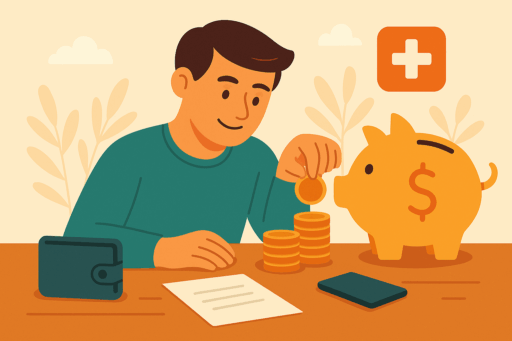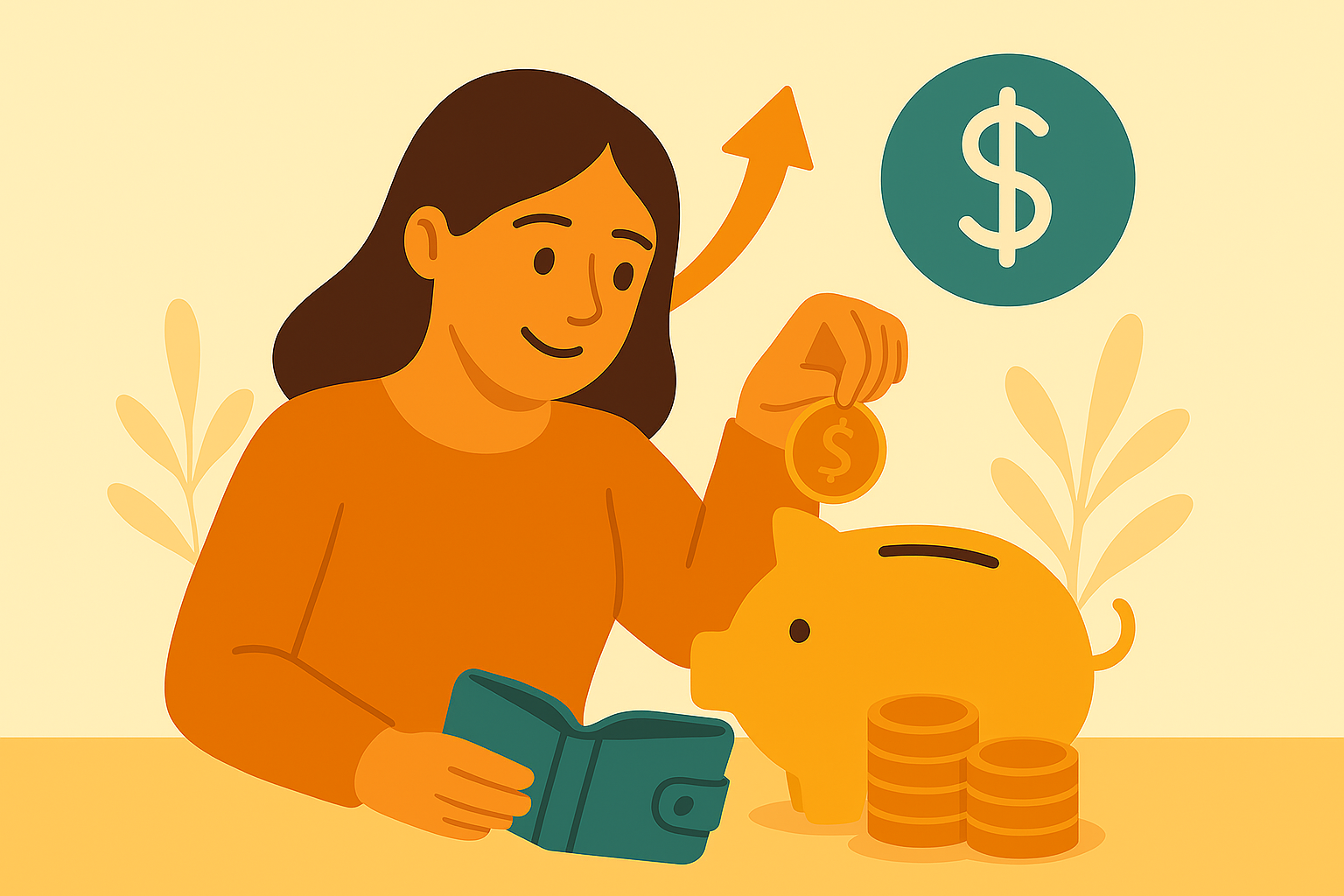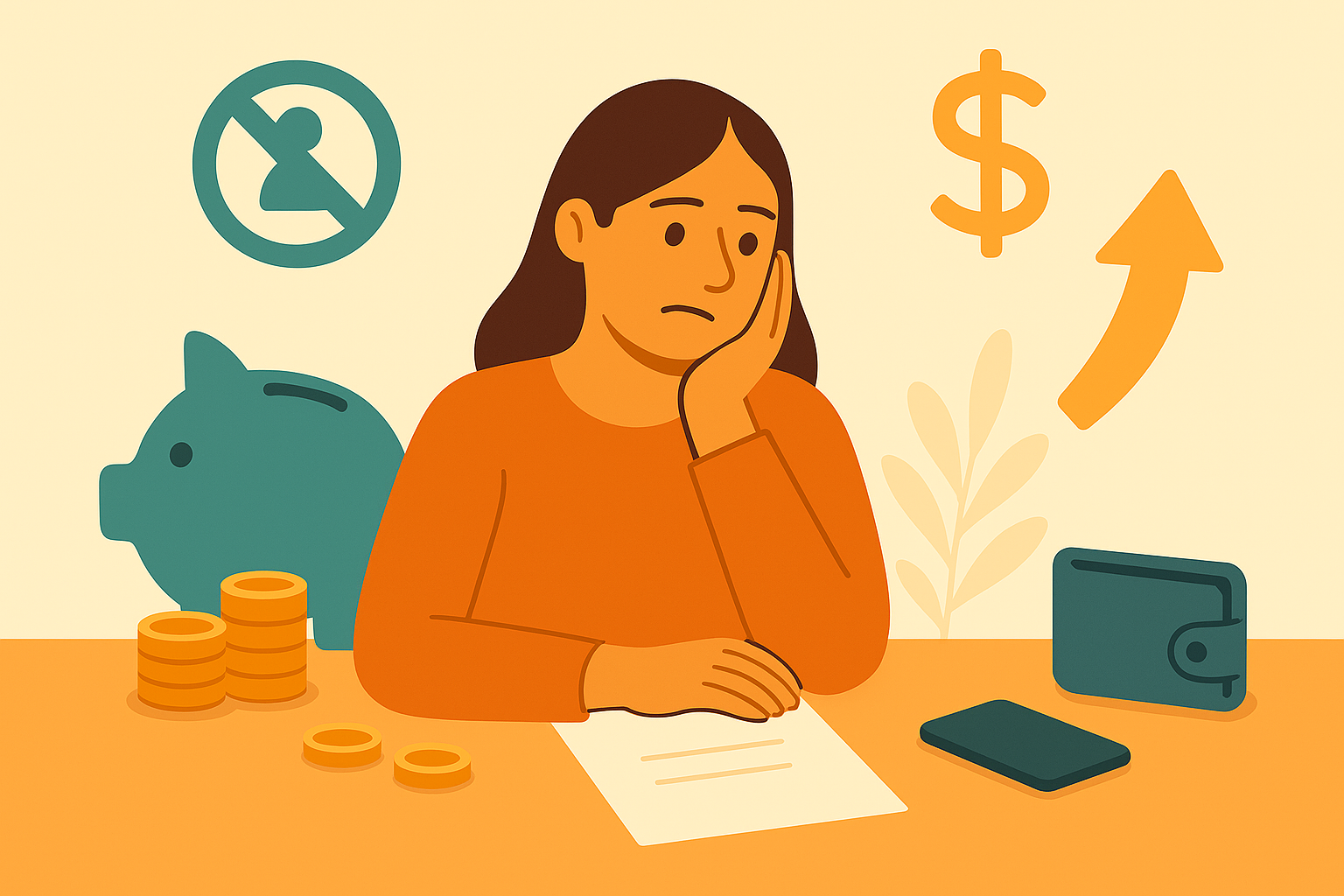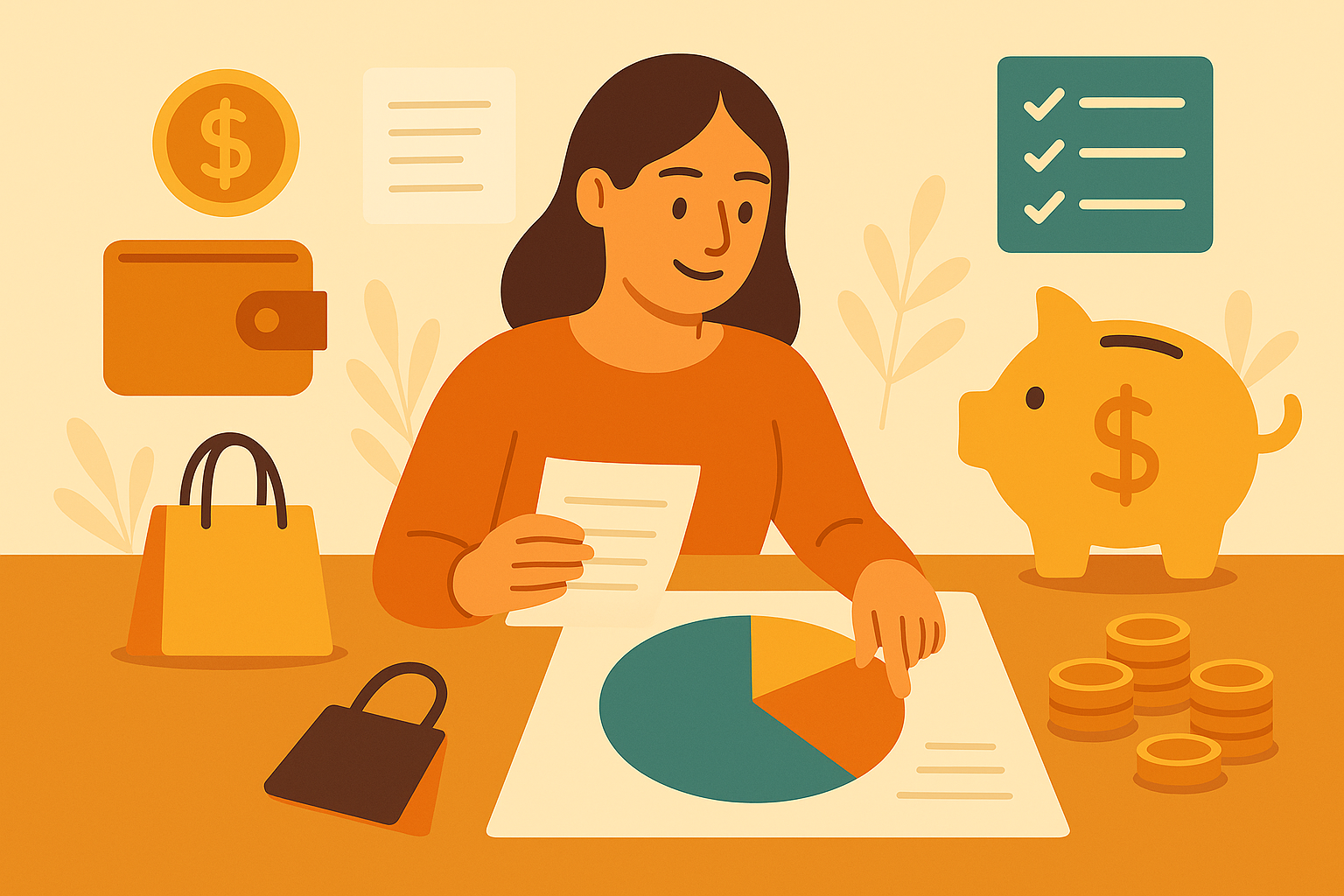You know that feeling when your stomach drops because something broke, something’s due, or something happened that’s going to cost you money you don’t have?
Yeah. That feeling.
I was sitting in a mechanic’s waiting room two years ago, scrolling mindlessly through my phone while trying not to think about how much this was going to cost. My car had started making this awful grinding noise on my way to work, and I knew – I just KNEW – it was going to be expensive.
The mechanic walked out with his clipboard. “$847 for repairs. Your car won’t run without it.”
Past me? Would have had a full meltdown right there in that waiting room. Would’ve spent the next three months paying off a credit card, losing sleep over interest charges, and eating the world’s saddest desk lunches to make up for it.
But this time? I just nodded, transferred the money from my savings account, and drove home. No panic attack. No credit card debt. No three-month financial hangover.
The difference? I finally had an emergency fund.
That feeling of NOT spiraling into financial chaos over an unexpected expense? That’s what actual financial security feels like.
What Exactly Is an Emergency Fund?
An emergency fund is money sitting in a savings account that you only touch when life decides to mess with you. Which, let’s be real, life loves to do.
It’s not for vacations. Not for that new phone you want. Not for the Black Friday sale that’s “too good to pass up.” Just emergencies.
Real emergencies look like:
- Car repairs you can’t avoid
- Medical bills insurance won’t cover
- Your dog eating something incredibly stupid (why are they like this?)
- Job loss or unexpected hours getting cut
- Your furnace dying in January
- Emergency flights home for family situations
Fake emergencies that absolutely do not count:
- Sales that feel urgent
- Upgrading perfectly functional things
- Concert tickets (even when your favorite band is in town)
- That couch that would “really tie the room together”
- Anything you’re justifying with “but I deserve it”
The whole point is simple: when something goes wrong, you can handle it without derailing your entire financial life.
Why You Need an Emergency Fund (The Real Cost of Not Having One)
Before I built my emergency fund, I was trapped in what I call the “broke cycle.” Something would break, I’d panic and put it on a credit card, then spend months making minimum payments while interest piled up. Right when I’d almost dig myself out, another emergency would hit, and boom – back to square one.
Want to know what this actually cost me?
My phone screen shattered. The $300 repair became $380 after six months of credit card interest.
My dog needed an emergency vet visit. The $500 bill turned into $625 by the time I finished paying it off.
Had to fly home for a family emergency. That $1,200 ticket cost me $1,450 total.
In two years, not having an emergency fund cost me an extra $455 just in interest payments. That’s money I literally threw away because I wasn’t prepared.
But the financial cost wasn’t even the worst part. The constant anxiety was. Lying awake at 2am running through “what if” scenarios. Avoiding my credit card balance. Feeling guilty every time I bought anything remotely fun.
An emergency fund breaks this cycle completely.
How Much Should Your Emergency Fund Be?
Everyone says you need 3-6 months of expenses saved. And if you’re starting from zero? That number is so absurdly overwhelming that you never start at all.
I did the math once. “Okay, I spend $3,000 a month, so I need $18,000 saved. Great. I’ll just pull that out of my… oh wait, I have $200 in savings. Never mind, this is impossible.”
And then I didn’t save anything.
Here’s what nobody tells you: you don’t need $18,000 to start feeling more financially secure. Building an emergency fund happens in stages.
Stage 1: The Starter Fund ($500-$1,000)
This is your first milestone. Sounds small, right? But this amount handles about 80% of the random financial disasters that pop up. Car repair. Medical copay. That weird rattling sound your fridge is making.
When I hit my first $500, something shifted. My dog knocked over a lamp, and I replaced it without rearranging my entire month. These little disasters stopped being disasters.
Stage 2: One Month of Essential Expenses
Once you have one month of your essential expenses covered, you can breathe easier. This covers you if your hours get cut or you have a couple of emergencies hit at once.
Calculate just the essentials – rent, groceries, utilities, insurance, minimum debt payments. Not everything you spend, just what you absolutely need to survive.
Stage 3: Three Months of Expenses
Now you’re in solid shape. You could handle unemployment, a major car repair plus a medical bill, or any combination of moderate emergencies. This is where I finally stopped waking up anxious about money.
Stage 4: Six Months of Expenses
This is the gold standard. Job loss? Covered. Major medical issue? Handled. Multiple big emergencies at once? You’re good.
So which target should you aim for?
Aim for 3 months if you:
- Have a stable job
- Are in a two-income household
- Have good job prospects in your field
- Have family support if things go really wrong
Aim for 6 months or more if you:
- Are self-employed or have irregular income
- Are the sole breadwinner
- Work in a volatile industry
- Have a specialized job that might take longer to replace
- Have dependents relying on your income
The key is not to obsess about reaching stage 4 immediately. Focus on stage 1 first. Then stage 2. Then stage 3. Progress beats perfection every single time.
Where to Actually Keep Your Emergency Fund
Your emergency fund needs to be three things:
- Accessible – you can get to it quickly in an actual emergency
- Safe – not invested in the stock market where it could lose value
- Separate – not mixed with your regular spending money
The best place? A high-yield savings account at an online bank.
High-yield savings accounts currently pay around 3-4% interest (versus basically 0% at traditional banks). On a $5,000 emergency fund, that’s $150-200 per year in free money just for keeping it there.
Online banks make it slightly inconvenient to access your money – it takes 1-2 days to transfer to your checking account. This is actually perfect for an emergency fund because it prevents impulse raiding while still being accessible for real emergencies.
Top Options for High-Yield Savings Accounts:
SOFI – No fees, easy interface, consistently competitive rates
Ally Bank – Great customer service, user-friendly app, no minimum balance
American Express Personal Savings – High rates, FDIC insured, easy transfers
Do a bit of research to find what works for you, but honestly? Just pick one and open an account today. The difference between high-yield savings accounts is minimal – maybe 0.1% or 0.2% in interest rates. But the difference between having an emergency fund and not having one is life-changing. Don’t let comparison paralysis stop you from starting.
What About Keeping Cash at Home?
I get the appeal, but it’s risky. Cash can be stolen, destroyed in a fire, or “borrowed” by future you in a moment of weakness.
Keep maybe $100-200 at home for true emergencies where you need immediate cash, but put the rest in a savings account where it’s protected and earning interest.
Real Emergencies That Proved Why I Needed This
Let me share some actual situations where my emergency fund saved me from financial disaster:
The Broken Tooth ($650)
I bit into something and felt a horrifying crack. Emergency dental appointment, temporary crown, follow-up appointments. Total cost: $650. Old me would have avoided the dentist and let it get worse (and way more expensive). Emergency fund me? Handled it immediately, no stress.
The Unexpected Job Gap (2 months of expenses)
My contract position ended earlier than expected. Thanks to my emergency fund, I could take my time finding the right next job instead of desperately taking the first offer out of financial panic. I found something better in six weeks, but knowing I had that cushion completely changed how I approached the job search.
Each of these situations would have sent past-me into a financial spiral – credit card debt, interest charges, months of stress. But with an emergency fund? They were just annoying inconveniences that I could handle and move on from.
How to Actually Use Your Emergency Fund (The 3-Question Test)
This is where most people mess up. They build up their fund, then something “kind of” emergency-ish happens, and suddenly the money’s gone. Then they feel like failures and stop trying.
Here’s my framework for deciding if something qualifies as a real emergency:
Ask these three questions:
- Is this truly unexpected? If it’s car insurance that’s due every six months, that’s not unexpected – that should be in your regular budget.
- Is it necessary right now? Broken phone screen is annoying but probably not immediately necessary. You can live with a cracked screen while you save up in your regular budget.
- What happens if I don’t handle this immediately? If the answer is just “I’ll be inconvenienced,” it’s probably not an emergency. If the answer is “my car won’t run and I can’t get to work” or “this medical issue will get worse,” that’s an emergency.
If it passes all three tests, use the emergency fund guilt-free. That’s literally what it’s for.
Then immediately start rebuilding it. Life doesn’t stop throwing emergencies just because you handled one. As soon as you use it, go right back to saving to rebuild it.
I used my emergency fund for that $847 car repair, then immediately went back to rebuilding. Took me about three months, but I did it.
Common Objections (And Why They’re Wrong)
“I can’t afford to save right now.”
You can’t afford NOT to save. The next emergency will cost you more in interest and stress than starting to save this week. Start with whatever you can – even $10 per week is infinitely better than nothing.
“I’ll just use my credit card if something happens.”
Sure, until your credit limit is too low, or you get declined, or you’re already maxed out. Plus, you’ll pay 18-25% interest, turning every emergency into a months-long financial burden. Your emergency fund is interest-free.
That $847 car repair on a credit card at 22% interest? You’d pay an extra $186 if you took a year to pay it off.
“The interest rate is too low, I should invest it.”
Your emergency fund is not an investment. It’s insurance. You don’t invest your insurance premiums hoping for returns – you buy insurance for protection.
Once you have 3-6 months saved, THEN you can start investing additional money. But your emergency fund stays safe and boring in a savings account.
“Six months feels impossible.”
Because you’re trying to do it all at once! Break it down: First $500, then $1,000, then one month, then three months. Celebrate each milestone instead of being overwhelmed by the final goal.
It took me 30 months to get to my full emergency fund, and that’s okay. Progress is progress.
The Mental Shift Nobody Talks About
Here’s something that happened after I built my emergency fund: I started sleeping better.
No joke. I stopped lying awake at 2am worrying about “what if” scenarios. What if my car breaks down? What if I get a huge medical bill? What if my laptop dies?
Having that money sitting there, ready and waiting, took away so much anxiety I didn’t even realize I was carrying.
Before my emergency fund, I lived in constant low-level anxiety about money. Every unexpected expense felt like a catastrophe. I avoided checking my bank account. I stayed in a job I hated because I was terrified of being without income for even a week.
After building my emergency fund, my entire relationship with money changed. I started making decisions from a place of confidence instead of fear. I stopped accepting toxic job situations just because I desperately needed the paycheck. I could make choices based on what was best for me.
There’s this weird confidence boost that comes with it too. You start making different decisions. You’re not desperate. You’re not stuck. You have options.
That’s what an emergency fund really buys you: options, peace of mind, and the freedom to make better decisions.
What Happens After You Hit Your Goal?
Once you’ve built your full 3-6 month emergency fund, congratulations! You’re officially ahead of about 60% of Americans. Seriously, take a moment to appreciate this accomplishment.
Stop actively adding to it. Once it’s fully funded, you don’t need to keep growing it forever. That money should go toward other financial goals.
Check it annually. If your expenses have increased significantly (new rent, new car payment, had a kid), you might need to adjust your emergency fund target upward. I review mine every January.
Start tackling your next financial goal:
- Pay off high-interest debt (anything over 7% interest should be priority)
- Max out your retirement contributions
- Save for a house down payment
- Build a car replacement fund
- Start investing in a brokerage account
The emergency fund is your foundation. Everything else you build financially becomes easier and less stressful once this foundation is solid.
The Bottom Line
Two years ago, I didn’t have an emergency fund. Every unexpected expense was a full-blown crisis. I was stressed, anxious, and stuck in the broke cycle.
Today, I have six months of expenses saved. When emergencies happen (and they still do), they’re just annoying instead of devastating. I sleep better. I make better decisions. I’m building actual wealth instead of constantly playing financial defense.
The difference between those two versions of me? I understood what an emergency fund was, figured out how much I actually needed, put it in the right place, and started building it consistently.
Your emergency fund won’t build itself. Life will keep throwing you reasons why “now isn’t the right time.” There will always be something you want to buy, some expense that pops up, some reason to put it off.
But here’s the truth: the best time to start was a year ago. The second best time is right now.
Your future self – the one who faces an unexpected car repair, medical bill, or job loss – is counting on the decision you make today.
That $847 car repair that would have wrecked me two years ago? Now it’s just a Tuesday that didn’t go as planned.
That’s the power of an emergency fund.
What about you? Do you have an emergency fund? What’s holding you back from starting? Drop a comment below – I’d love to hear where you are in your journey!


